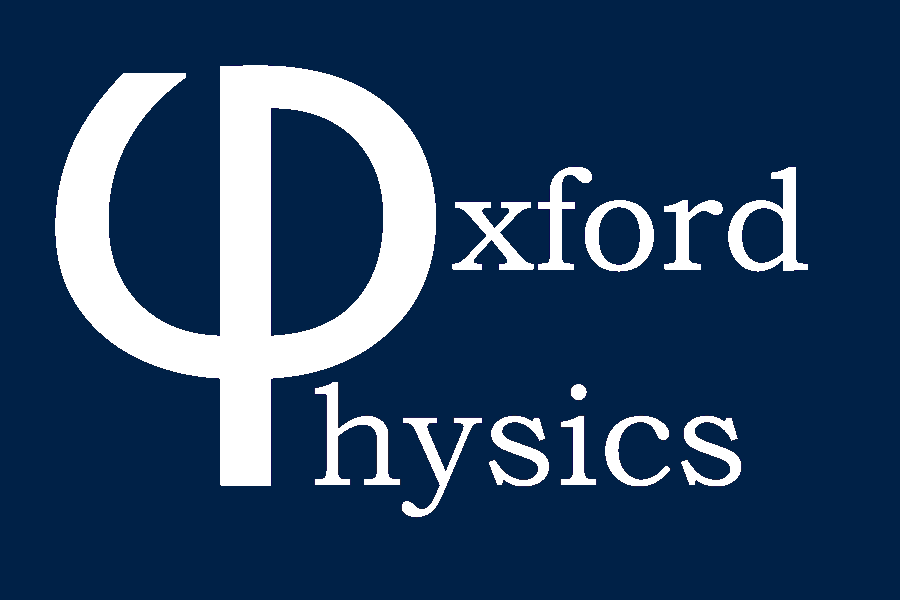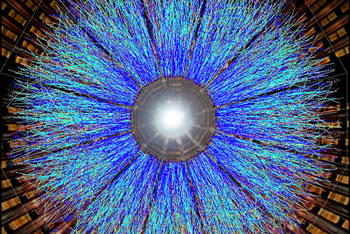Holography Seminar
Time and place: Tue 2-4 pm, Seminar Room 501, DWB (additional seminars and non-standard time are listed in bold)
Trinity Term 2014 Talks:
- 14/10/2014: No Seminar
- 21/10/2014: Nick Evans (U. Southampton): Dynamic AdS/QCD & the Spectra of Asymptotically Free Gauge Theory
Abstract: Dynamic AdS/QCD is an improved holographic description of QCD that inputs the dynamics through the running of the anomalous dimension of the quark condensate. I will motivate it from top-down D3/D7 models of chiral symmetry breaking. The model allows the study of the behaviour of the meson spectrum as one changes Nf and Nc and even the representation of the quarks. I will compare to lattice data and display behaviours of walking theories and those that lie in the conformal window.
- 28/10/2014: Mukund Rangamani (U. Durham): Adiabatic Fluids
Abstract: I will describe the theory of adiabatic fluid transport, wherein the off-shell dynamics of the fluid compensates for entropy production. These types of fluids capture many interesting features of fluid dynamics which have been uncovered in recent years. Specifically, I will show that the adiabatic fluids naturally encompass the non-dissipative fluids and furthermore provide a natural off-shell extension of the hydrostatic partition function. As applications, we demonstrate this framework captures precisely the constraints on anomalous fluid dynamics for both flavour and Lorentz anomalies in even dimensions. We also use the results herein to explain some of the intriguing constraints on hydrodynamic transport coefficients that have been uncovered in holographic investigations.
- 04/11/2014: Mike Blake (DAMPT Cambridge): Holographic Transport and the Hall Angle
Abstract: There has recently been a large amount of progress in obtaining exact expressions for transport properties in holographic theories with broken translation invariance. In this talk, I will review these results and discuss their generalization to holographic transport in a magnetic field. Remarkably, we find that for strong momentum dissipation these theories naturally display an anomalous scaling in the Hall angle - a phenomenon that is experimentally observed in strange metals.
- 11/11/2014: Roberto Emparan (U. Barcelona): Black Holes in the 1/D Expansion
Material: SlidesAbstract: Ninety-nine years after Einstein formulated General Relativity, the pivotal role of its most fundamental and fascinating objects --- the black holes --- is nowadays recognized in many areas of physics, even beyond astrophysics and cosmology. Still, solving the theory that governs their dynamics remains a formidable challenge that continues to demand new ideas. From many points of view, it is natural to consider the number of spacetime dimensions, D, as an adjustable parameter in the theory. Then we can use it for a perturbative expansion of the theory around the limit of very many dimensions, that is, considering 1/D as a small number. In this limit the gravitational field of a black hole simplifies greatly and its equations often turn out to be analytically tractable. A simple picture emerges in which, among other things, the shape of the black hole is determined by the same equations that describe soap bubbles.
- 18/11/2014: Michael Ferlaino (U. Swansea): A Universal Correction to Higher Spin Entanglement Entropy
Abstract: Within the context of the duality between higher spin gravitational theories and a semi- classical limit of WN minimal models, we consider 2D CFTs with W symmetry at finite temperature, deformed by the presence of a chemical potential for the spin–three current. As a perturbative expansion in the chemical potential, we compute the R ́enyi and entanglement entropies for a single interval. The leading correction is universal and matches the holographic result, based on Wilson line functionals, for higher spin black holes dual to CFTs with W symmetries.
- 25/11/2014: Natalia Pinzani-Fokeeva (U. Amsterdam): Effective Actions for Fluids from Holography and the Membrane Paradigm
Abstract: It is widely believed that hydrodynamics is the low energy effective theory of any quantum field theory. In this talk I will derive the local low energy effective action for uncharged dissipationless conformal fluids through holography. This can be achieved by solving a double-Dirichlet problem for linearised gravitational perturbations between the conformal boundary of a (4+1)-dimensional AdS-black brane background and a stretched horizon. Interestingly dissipationless fluid dynamics is captured by Goldstone bosons of the broken symmetries by the classical solution ending on the second boundary. I will discuss how the effective action approach might be inconsistent unless there is a coupling to a dissipative dynamical IR sector which for simplicity can be replaced by a membrane paradigm-like boundary condition on a stretched horizon and I will also comment on the limits of validity of this simplification.
- 02/12/2014: Chris Eling (U. Oxford): Holographic Hydrodynamics in Horava-Lifshitz gravity
Material: PaperAbstract: I will study the holographic hydrodynamics of black holes in generally covariant gravity theories with a preferred time foliation. Gravitational perturbations in these theories have spin two and spin zero helicity modes with generically different speeds. The black hole solutions possess a spacelike causal boundary called the universal horizon. We relate the flux of the spin zero perturbation across the universal horizon to the new dissipative transport in Lifshitz field theory hydrodynamics found in arXiv:1304.7481. I will construct the perturbed black hole solution and calculate the ratio of the shear viscosity to the entropy density.
If you are interested in presenting your research in Oxford, please contact Jonas Probst.
For a list of past talks follow this link.
The following might also be of interest:
- A weekly updated list of talks related to string theory.
- A list of all seminars in the Physics Department, including the Theoretical Physics Colloquium and the Particles and Fields Seminar.

